Samsung Fascinate Review: Verizon's Galaxy S Smartphone
by Brian Klug on October 5, 2010 12:01 AM EST- Posted in
- Smartphones
- Samsung
- Galaxy S
- Fascinate
- Mobile
Hardware Impressions and Analysis
The Fascinate feels unlike almost any other high-end Android device I've had the chance to review so far. Where other smartphones are predominantly metal and thus pack some considerable heft, the Fascinate is lightweight and just a tad plasticky. It's simultaneously amazing that a smartphone can feel so insubstantial, and just a bit unnerving.
The second thing that's striking about the Fascinate is that it's also incredibly thin. In fact, it's nearly as thin as the iPhone 4:

(Left to right) Motorola Droid 2, Samsung Fascinate, iPhone 4
By the numbers, the Fascinate is just 0.61 mm thicker than the iPhone 4. But it's also 10 grams lighter. You've got our usual comparison table to compare thicknesses on paper, but it's hard to really convey just how thin the Fascinate feels. The rest of the Galaxy S line - with the exception of the Epic - shares this same impressive waistline.
To that extent, whether you like or hate how the phone feels in your hand will depend on whether you gauge quality as a function of mass. If heavier and more substantial translates to better constructed for you, the Fascinate will undoubtedly feel a bit cheap. However, if you're all for lighter and thinner devices, the Fascinate is perfect - it's the kind of device you can forget is in your pocket despite having a 4 inch screen.
I mentioned that the phone feels somewhat plasticky to me - it's entirely because of the build material you're in contact with. The back cover itself is entirely smooth, glossy plastic. Likewise, the sides and edges of the Fascinate are glossy plastic. The unfortunate consequence of this choice is that - like the iPhone, it's prone to scratching almost immediately and showing fingerprints. Even living completely alone in my pocket for a week or two, the Fascinate's back is now visibly scratched under the right angle of illumination. I promise it isn't as noticeable as it looks here, but it's enough to occasionally shock when the light catches it the wrong way. It's eerily reminiscent of how prone to scratching the iPhone 3G and 3GS backs are.
There's a dark glossy checkerboard pattern on the back, but the actual surface itself is completely smooth. The Fascinate's back cover material is thus very similar in nature to the Vibrant.
Getting the cover off involves sticking your thumb in a small notch the bottom of the device and literally prying the whole thing off. There's a small raised bit for the speakerphone output on the rear of the device, and two notches for getting that audio out.
The camera and flash area protrudes through the back cover and doesn't come off. This is nice, as on devices like the Nexus One, there's a second plastic layer between the camera integrated into the back cover where fingerprints and gunk collect, adding to camera glare.
Under the cover, the Fascinate is pretty spartan. There's the click-to-eject type microSD port, and down below is a 5.55 Whr Li-ion battery.
On the left are the volume rocker button and a port for the secondary microphone for noise cancellation. You can follow that port inside to a small chamber where the microphone is. There aren't any markers on the volume rocker - then again up and down are pretty obvious. The volume rocker is also a multipurpose zoom control in the browser and camera application, which is probably part of why it's left unmarked.
The right side is pretty boring, sporting the power button (which is thankfully marked) about 2/3rds up the side of the device. Location of the power button is perfect for your thumb when held in the right hand, or index finger when held in the left hand.
Things are interesting up top. There's the standard 1/8", 3.5 mm audio jack for headphones, a "Digital by Qualcomm" sticker, and the microUSB cover hiding the port underneath. The cover itself slides back and forth and has two detents that hold the cover open or closed. There's a groove you can get your nail into to slide the mechanism.
Putting the microUSB port on the top may seem like a strange choice - something I even pointed out in the Nokia N900 review - but it makes some sense. For one, it gets the cable out of the way when you're using the device while charging. Second, it also means you can dump the phone right side up into a cupholder in the car while on the go. For me at least, having the charger somewhere other than the side makes using the device while charging or taking screenshots a heck of a lot less of a balancing act.
It's a choice that will probably seem very strange to people at first, but definitely doesn't impede using the Fascinate plugged in.
The Fascinate's hardware for me is ultimately a mixed bag. I love the fact that it's thin and light, but it feels so insubstantial in my hands that sometimes I forget it's a tier-1 smartphone. That isn't to say that the Fascinate feels cheap or has bad build quality - it doesn't - it just doesn't really inspire gobs of confidence the first time you pick it up. There's no rattling when the Fascinate vibrates, something I find indicative of build quality, and there's no doubt about the rigidity of the structure. It just has a weird feel in an open palm.
I really like that the Fascinate is thin and lightweight - I just don't like that the back feels the way it does.
The most obvious physical comparisons to the Fascinate's 4" form factor are the Droid X and the EVO 4G. I don't have the Droid X anymore and thus couldn't grab a shot, but I do have Anand's EVO 4G. The two are almost the same size wise, with the Droid X being just a few millimeters taller. I tossed in the iPhone 4 for good measure:
125 mm (4.92")
| Physical Comparison | |||||||||
| Apple iPhone 4 | HTC EVO 4G | Motorola Droid X | Motorola Droid 2 | Samsung Galaxy S Fascinate | |||||
| Height | 115.2 mm (4.5") | 121.9 mm (4.8") | 127.5 mm (5.02") | 116.3 mm (4.6") | 125 mm (4.92") | ||||
| Width | 58.6 mm (2.31") | 66.0 mm (2.6") | 66.5 mm (2.62") | 60.5 mm (2.4") | 63.5 mm (2.5") | ||||
| Depth | 9.3 mm ( 0.37") | 12.7 mm (0.5") | 9.9 mm (0.39") | 13.7 mm (0.54") | 9.91 mm (0.39") | ||||
| Weight | 137 g (4.8 oz) | 170 g (6.0 oz) | 155 g (5.47 oz) | 169 g (5.9 oz) | 117 grams (4.16 oz) | ||||
| CPU | Apple A4 @ ~800MHz | Qualcomm Scorpion @ 1GHz | TI OMAP 3630 @ 1GHz | Texas Instruments OMAP 3630 @ 1 GHz | 1 GHz Samsung Hummingbird | ||||
| GPU | PowerVR SGX 535 | Adreno 200 | PowerVR SGX 530 | PowerVR SGX 530 | PowerVR SGX 540 | ||||
| RAM | 512MB LPDDR1 (?) | 512MB LPDDR1 | 512MB LPDDR1 | 512 MB LPDDR1 | 512 MB LPDDR1 | ||||
| NAND | 16GB or 32GB integrated | 8GB micro SD | 8GB micro SD | 8 GB integrated, preinstalled 8 GB microSD | 2 GB, 16 GB microSD (Class 2) | ||||
| Camera | 5MP with LED Flash + Front Facing Camera | 8MP with dual LED Flash + Front Facing Camera | 8MP with dual LED Flash | 5 MP with dual LED flash and autofocus | 5 MP with auto focus and LED flash | ||||
| Screen | 3.5" 640 x 960 LED backlit LCD | 4.3" 480 x 800 | 4.3" 480 x 854 | 3.7" 854 x 480 | Super AMOLED 800 x 480 | ||||
| Battery | Integrated 5.254Whr | Removable 5.5Whr | Removable 5.698 Whr | Removable 5.2 Whr | Removable 5.55 Whr | ||||
Product packaging is an increasingly important aspect of smartphone presentation. Where the Motorola Droids thus far have been packaged in small and relatively basic boxes for optimal packing density, the Fascinate has more lavish, larger packaging. Inside the box you get phone on top, then below it are manuals, power adapter, and USB cables. Pretty standard fare, but still nicer than I've seen other packaging.


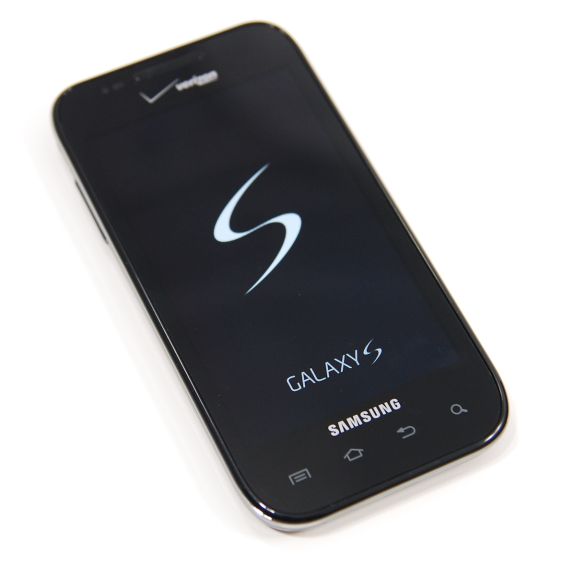
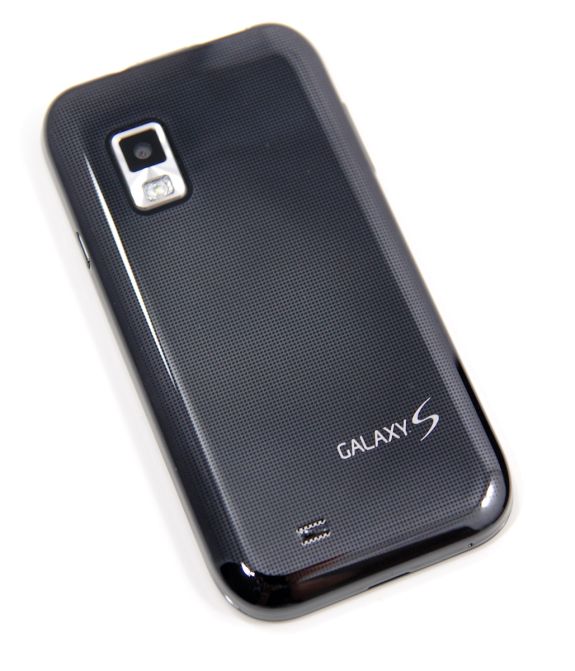
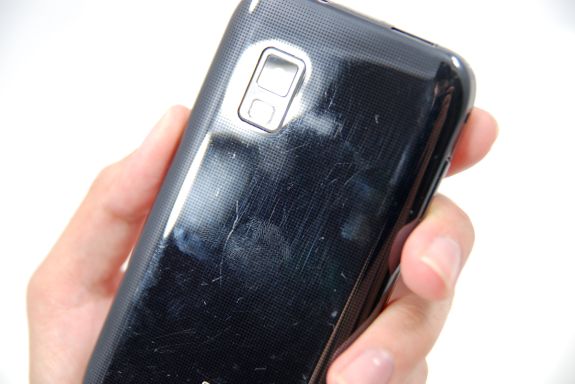

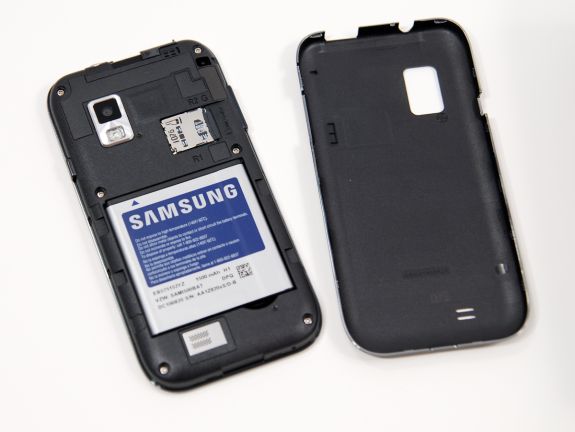




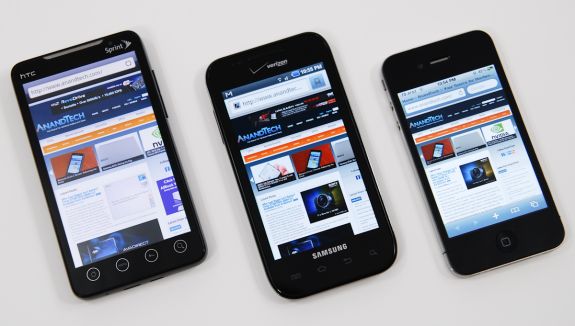
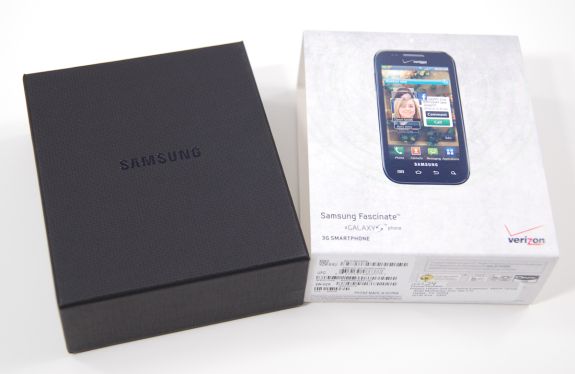








73 Comments
View All Comments
Brian Klug - Tuesday, October 5, 2010 - link
Chemist1,I actually completely agree with you, 100%. When I joined on to tackle smartphones, my big objective has and still is to nail down testing for everything that's traditionally been subjective - battery life, screen quality, performance, signal strength, e.t.c, and make it just as objective as hardware reviews. Of course, audio (voice) quality is on that list as well.
I've been grappling for some time on an ideal test methodology, one that would give a much better (objective) means of testing actual call quality than - it sounded good. I honestly couldn't agree more that this level of analysis is lacking. Unfortunately, until I've got that nailed down, it's really all I can say. What shape that takes is still up in the air.
I've thought of recording the local ASOS weather station test call (which is so far what I use for measuring speakerphone volume) through both the line-out and speaker, then letting people compare those audio files directly. I've considered using some spectral analysis tools similar to determine the pass bandwidth of these phones (of course this would require some tweaking due to cellular latency and also a land line), and a few other things. If you or other commenters have suggestions, I'm more than all ears, seriously ;)
I've actually done a fair amount of playing with CDMA voice codecs in the past - a number of WinMo devices would let you change from relatively-basic EVRC to better 13k voice codecs and a number of others. That kind of discussion and reporting about what codecs each device are using is where I'd like to go, getting that from Android sometimes is very difficult unfortunately. In fact, only device I've really seen that on so far is the EVO. I'd also like to eventually be able to characterize the difference between 1x voice, GSM and UMTS.
There's a lot more we're trying to add for certain, I/we just have to figure out what the best way of testing those would be.
-Brian
jasperjones - Tuesday, October 5, 2010 - link
You may find this shocking but I highly doubt people will consider audio quality as important as you do when deciding for a smartphone.I faintly remember some study on what consumers are looking for in portable audio/MP3 players. Audio quality was NOT in people's top 5! Design, storage capacity, and three other things I cannot recall right now were more important to them. In an audio device!!
So there you go.
chemist1 - Tuesday, October 5, 2010 - link
jasperjones: Thanks for your comment. Well, one needs to be careful of these surveys, since small differences in wording can significantly change the outcome. But your point is well-taken: audio quality is not a top priority for consumers. Nevertheless, that's not to say that audio quality is of no interest to the majority of consumers, nor that it should not therefore be of significant interest to us. [Please see paragraphs 2 and 3 of my reply to kmmanety.]MacTheSpoon - Wednesday, October 6, 2010 - link
Audio quality matters to me, too, thanks for fighting the good fight, chemist1. ;)By the way, I own the phone and I have found the audio to be pretty good for calls so far. At least, I haven't found myself wishing the phone was louder or had any problems distinguishing speech.
Listening to music with headphones...I don't have golden ears, and I don't know how it stacks up to a top mp3 player like a Cowon, but it's definitely not a low-end sound like my iPod Nano 4th Gen or my 2007 Macbook Pro, anyway.
strikeback03 - Thursday, October 7, 2010 - link
Kinda like how in CNET reviews of point and shoot cameras image quality only accounts for something like 10% of their final score.Though a lot of consumers probably just assume audio quality is good enough. The majority are going to put compressed music on there anyway and then use cheap earbuds, so a lot of the audio quality discussion that goes on on tech sites is utterly irrelevant to the majority.
cwebersd - Wednesday, October 6, 2010 - link
In addition to measurements of sound quality, how about a simple internal poll? Record sound samples of various phones, post them with obfuscated names for other staff members to listen to and have them judge intelligibility, clarity, harshness, etc. This should give you a decent sampling of real people's observations. Better than just your own.dagamer34 - Tuesday, October 5, 2010 - link
Brian, there are some JPEG artifacts in your gallery shots. I doubt the D80 has such visible artifacts on a downrezzed shot.Brian Klug - Tuesday, October 5, 2010 - link
Yeah unfortunately the gallery preview images are compressed even though I upload originals from all the cameras. If you click "View original size" you'll get the raw untampered JPEG though, complete with all the EXIF headers and everything you'd get from the camera. Unfortunately I can't control how the engine compresses those images for the gallery preview.-Brian
kmmatney - Tuesday, October 5, 2010 - link
One problem is that the Audio quality changes so much with various factors (signal quality, the phone at the other end, etc..).I would disagree that that the main purpose of these phones is to actually be a "phone". No one cares that much about call quality when they are buying these phones - you just assume it will be acceptable.
softdrinkviking - Tuesday, October 5, 2010 - link
Brian, even though there are many factors, I think you can do an, "all things being equal" type of test with a couple of variations.The data will still be meaningful when you are comparing it to other specific phones.